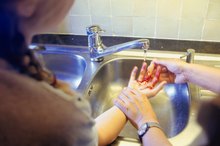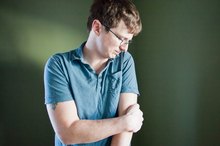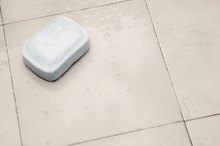Will Abrasion Wounds Heal Faster Uncovered?
An abrasion, also called a scrape or graze, is a wound to the superficial layer of the skin. Abrasions are usually caused by trauma, such as a fall, that grinds or scrapes away the skin surface. Since the skin protects you against bacteria and other germs, an abrasion exposes the deep skin structures to possible infection. There are many strategies you can use to decrease the possibility of infection in an abrasion. One of them is covering the wound. When an abrasion is protected with a bandage, the chance of infection decreases, allowing the wound to heal faster.
Wound Evaluation and Bleeding
Once an abrasion occurs, it is important to evaluate the wound. Abrasions are superficial, but depending on the trauma that causes it, the skin can also suffer a laceration, which is a deeper cut that may need to be stitched to allow for proper healing. The bleeding associated with scrapes or abrasion is usually minor and easily controlled. If the abrasion doesn’t stop bleeding on its own, apply gentle pressure with a bandage or nonstick gauze for about 20 to 30 minutes. It is better not to check continuously whether the bleeding has stopped because you may dislodge a newly formed clot.
- Once an abrasion occurs, it is important to evaluate the wound.
- It is better not to check continuously whether the bleeding has stopped because you may dislodge a newly formed clot.
Cleaning the Wound
How to Treat a Weeping Wound
Learn More
Trauma to the skin can introduce dirt while causing an abrasion. Dirt carries many microbes, so a dirty wound significantly increases the chance of infection and delayed wound healing. The best way to clean a wound is to run warm water on it. Use soap and a washcloth to clean around the area of the wound, but not the wound itself, since soap can irritate the wound. If there are dirt particles in the wound that do not come out with running water, use clean tweezers to remove them. Once the wound is clean, you can apply a thin layer of topical antibiotic ointment before covering it with a clean, sterile bandage.
- Trauma to the skin can introduce dirt while causing an abrasion.
- If there are dirt particles in the wound that do not come out with running water, use clean tweezers to remove them.
Covering the Wound
Wound healing begins when the blood clots, eventually forming a scab. Under the scab, skin cells and blood vessels begin to reconstruct the damaged tissue. It is important that nothing disrupts this process, in order to achieve proper wound healing. Covering the wound helps avoid disruption of healing. A 1995 study published in the journal "Dermatology Surgery" found that covering a wound prevents drying. This enhances new skin formation. Another study in the February 2007 issue of "Emergency Medicine Clinics of North America" reported that covering a wound maintains moisture, enhancing the healing process and reducing pain and scarring 3. Covering a wound also prevents it from getting dirty, decreasing the chance of infection.
- Wound healing begins when the blood clots, eventually forming a scab.
- Another study in the February 2007 issue of "Emergency Medicine Clinics of North America" reported that covering a wound maintains moisture, enhancing the healing process and reducing pain and scarring 3.
Signs of Infection
How to Treat Turf Burns
Learn More
Covering a wound helps speed wound healing, but infection can delay this process. It is, therefore, important to monitor for signs of infection. Look for redness, swelling, continued or uncontrolled seepage of blood, increasing drainage and continuing pain. If any of these signs develop, seek medical attention.
- Covering a wound helps speed wound healing, but infection can delay this process.
- It is, therefore, important to monitor for signs of infection.
Related Articles
References
- "Dermatologic Surgery"; Moist Wound Healing with Occlusive Dressings; Kannon GA, Garrett AB.; July 1995
- "Emergency Medicine Clinics of North America"; Occlusive Wound Dressings in Emergency Medicine and Acute Care; Fonder MA, et al.; Feb. 2007
- 3M Wound Resource Center. http://solutions.3m.co.uk/wps/portal/3M/en_GB/skin-care/wound-resource-centre/
- Mccaughan D, Sheard L, Cullum N, Dumville J, Chetter I. Patients' perceptions and experiences of living with a surgical wound healing by secondary intention: A qualitative study. Int J Nurs Stud. 2018;77:29-38. doi:10.1016/j.ijnurstu.2017.09.015
- Krafts KP. Tissue repair: The hidden drama. Organogenesis. 2010;6(4):225-33. doi:10.4161/org.6.4.12555
- Chetter IC, Oswald AV, Fletcher M, Dumville JC, Cullum NA. A survey of patients with surgical wounds healing by secondary intention; an assessment of prevalence, aetiology, duration and management. J Tissue Viability. 2017;26(2):103-107. doi:10.1016/j.jtv.2016.12.004
- Singh PK, Saxena N, Poddar D, et al. Comparative Study Of Wound Healing In Primary Versus Delayed Primary Closure In Contaminated Abdominal Surgery. Hellenic J Surg. 2016;88:314–320. doi:10.1007/s13126-016-0340-8
- Surgical Patient Education Program: Prepare for the Best Recovery. American College of Surgeons. 2018.
- Rushbrook JL, White G, Kidger L, Marsh P, Taggart TF. The antibacterial effect of 2-octyl cyanoacrylate (Dermabond®) skin adhesive. J Infect Prev. 2014;15(6):236-239. doi:10.1177/1757177414551562
- Lazar HL, Mccann J, Fitzgerald CA, Cabral HJ. Adhesive strips versus subcuticular suture for mediansternotomy wound closure. J Card Surg. 2011;26(4):344-7. doi:10.1111/j.1540-8191.2011.01257.x
- 3M Wound Resource Center.
Writer Bio
Ruben J. Nazario has been a medical writer and editor since 2007. His work has appeared in national print and online publications. Nazario is a graduate of the University of Louisville School of Medicine, and is board-certified in pediatrics. He also has a Master of Arts in liberal studies from Skidmore College in Saratoga Springs, N.Y.







